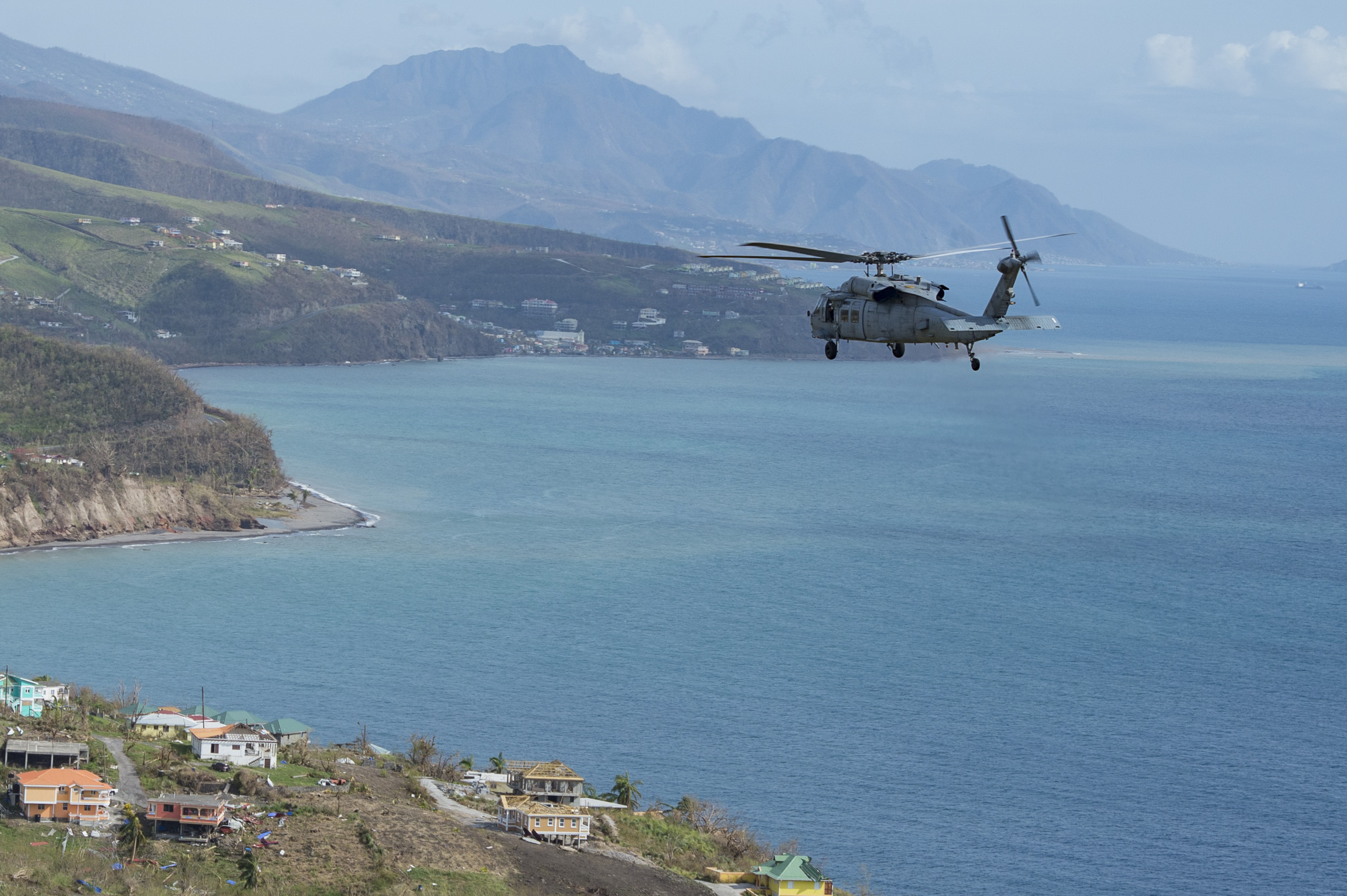
Amphibious assault ship USS Wasp (LHD-1) will join the Kearsarge Amphibious Ready Group in Puerto Rico later this week with additional helicopters to assist with Hurricane Maria disaster relief efforts there.
Wasp departed for Puerto Rico with three MH-60S multi-mission helicopters and two MH-53 heavy-lift helicopters, but by Wednesday, as the amphibious assault ship joins the ARG, the ship will have an additional four MH-53 and six MH-60 helos, according to a Navy spokesperson. Wasp had been providing Hurricane Maria relief to the island of Dominica.
Local and federal officials are anxiously awaiting the arrival of more air assets to conduct aid missions in areas not accessible by car, Puerto Rico governor Ricardo Rossello said in a Sunday press conference.
“We need people, which we’re getting; resources, which we’re getting; and fine-tuning the logistics, because the roads have been decimated,” he said.
The Kearsarge ARG has been airlifting food, water, and other supplies to communities cut off from the rest of the island due to washed out and blocked roads and collapsed bridges, according to the Department of Defense.
The Kearsarge ARG includes amphibious assault ship USS Kearsarge (LHD-3), dock landing ship USS Oak Hill (LSD-51) and the 26th Marine Expeditionary Unit. The ARG has been providing assistance to the region for nearly a month, as three major hurricanes passed, according to the Navy.
The Federal Emergency Management Agency (FEMA), the Department of Defense, and the Puerto Rican government are working to establish more regional distribution centers. Currently the island has 11 such centers operating, Rossello said.
The Department of Defense has about 6,400 personnel in Puerto Rico, and Rossello said more military members are expected to arrive. The total number of military personnel will fluctuate, he added, as tasks are completed and new aid needs are identified.
The need for food, water, and supplies is staggering. Currently, Rossello said Puerto Rico has 300,000 barrels of diesel fuel and 100,000 barrels of gasoline. He expects to soon have nearly half a million barrels of diesel and close to 1 million barrels of gasoline. However, only 10 of Puerto Rico’s 69 hospitals are fully energized with electricity from the island’s power grid. The rest of the medical facilities that are operational are relying on power from diesel-fueled generators, Rossello said. Also, 46 of 48 kidney dialysis centers on the island currently powered by diesel generators.
The expected Tuesday arrival in Puerto Rico of hospital ship USNS Comfort (T-AH-20) will dramatically increase the island’s access to health care, Rossello said. Comfort’s arrival will “give Puerto Rico an additional degree of freedom to move patients. Comfort can take up to 1,000 patients.”
Department of Defense personnel, including Marines and sailors from the ARG, are also helping establish alternative medical locations on the hard-hit southeastern and middle north part of the island, Rossello said.





